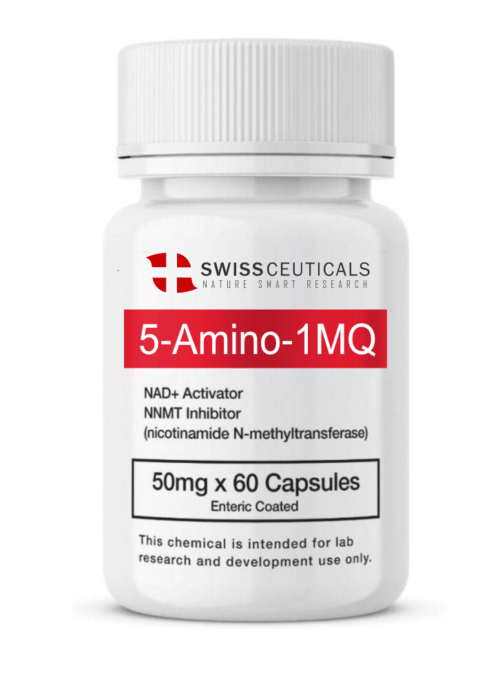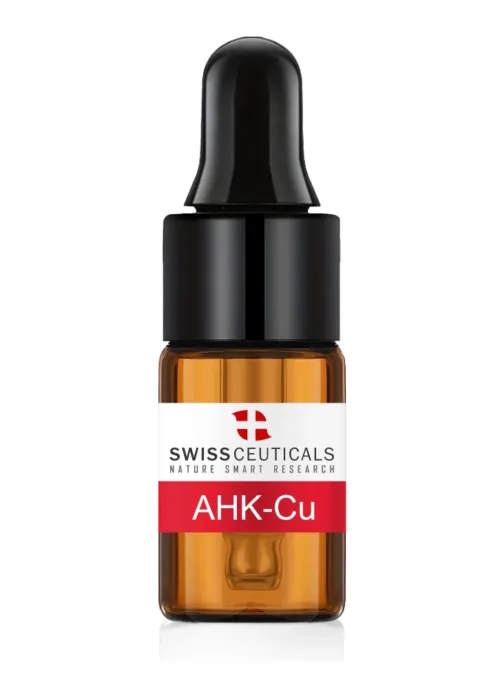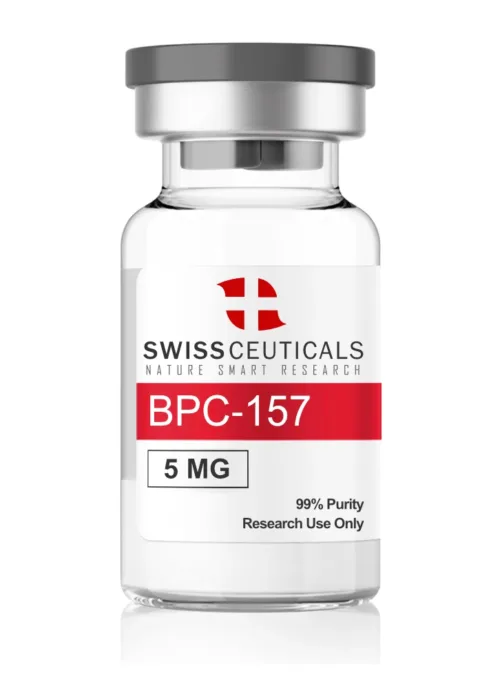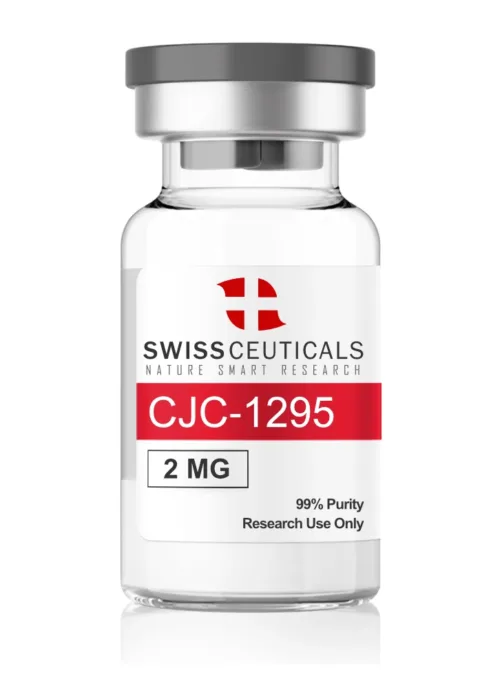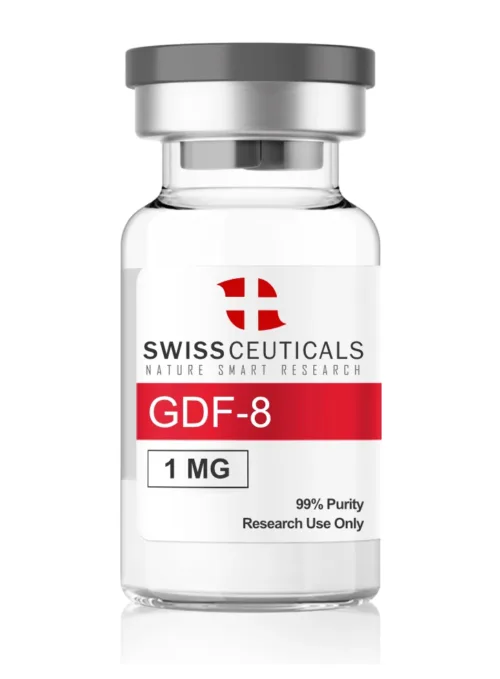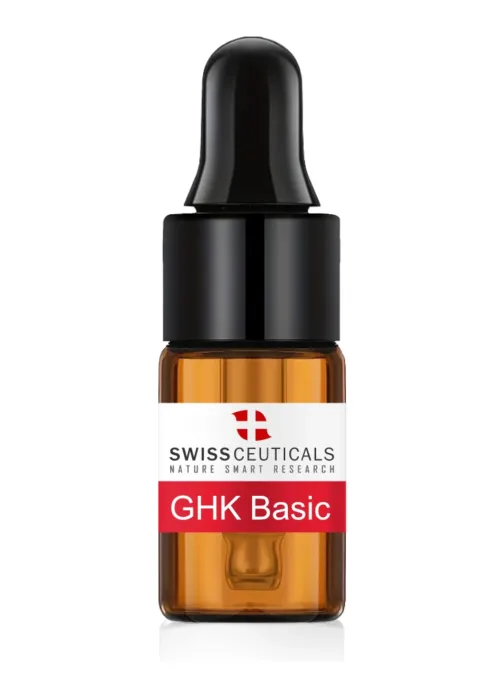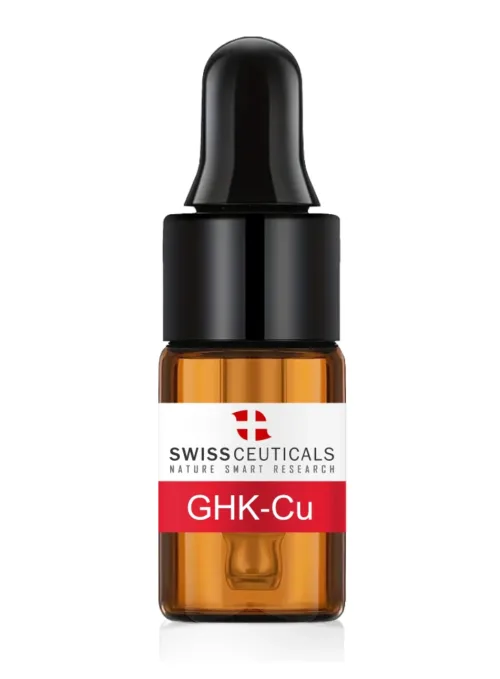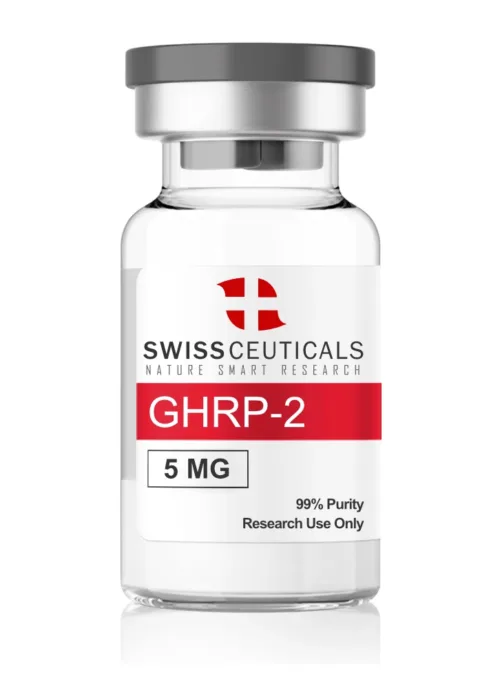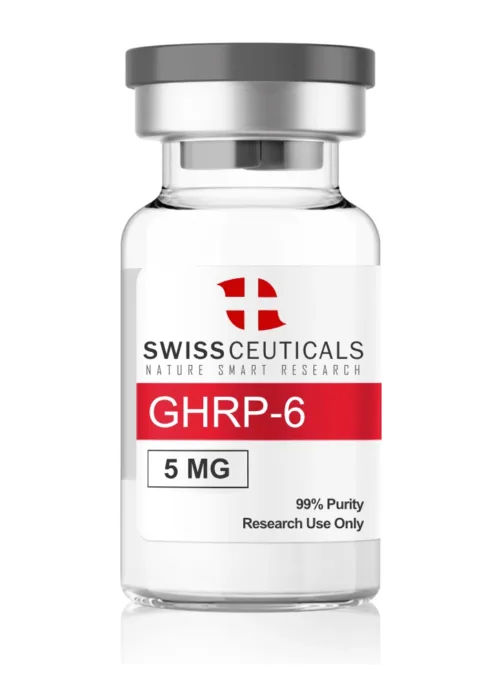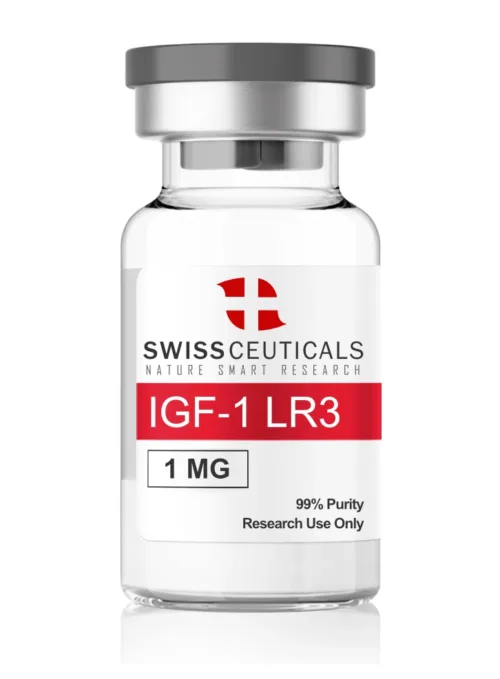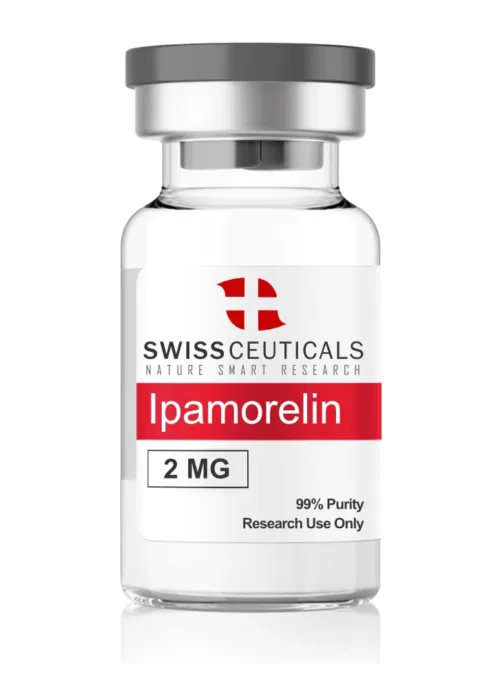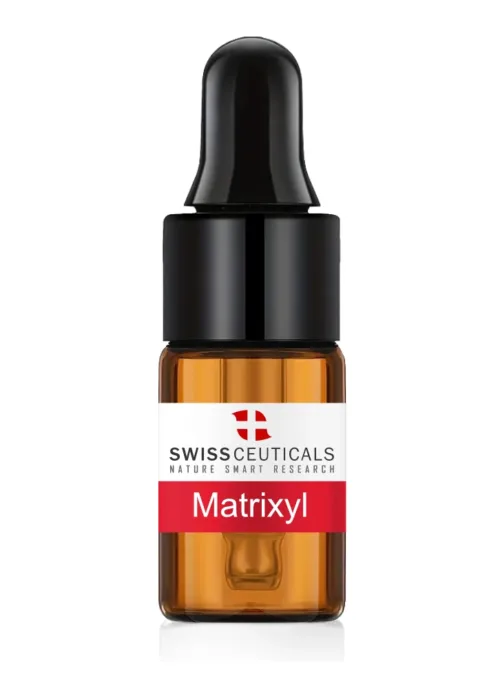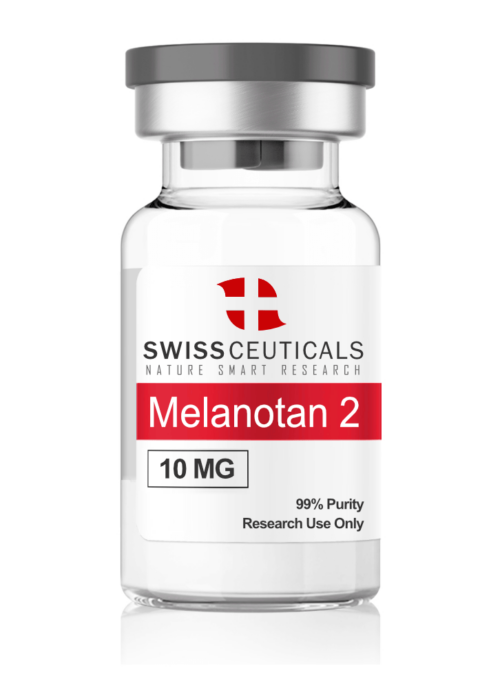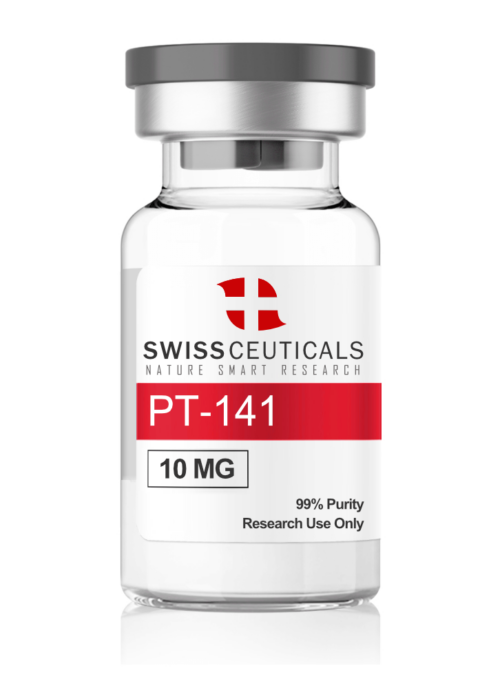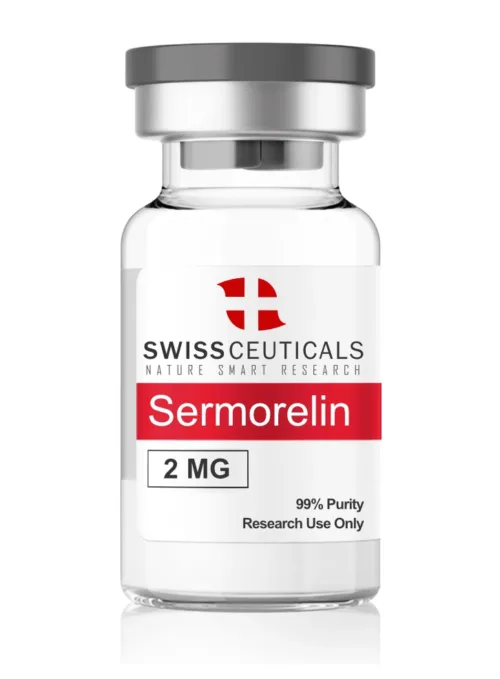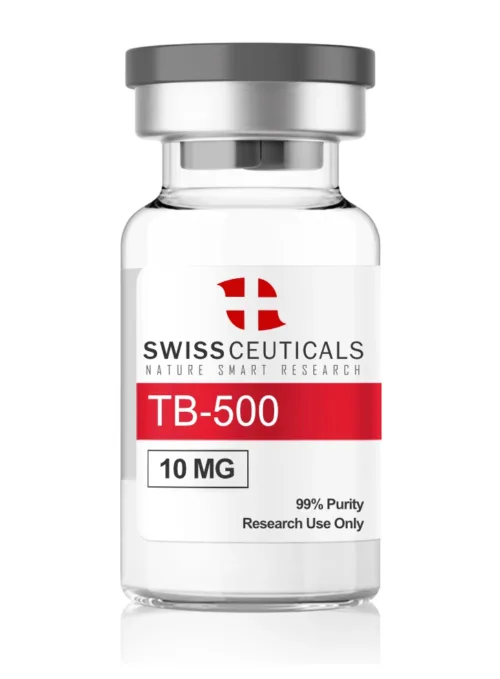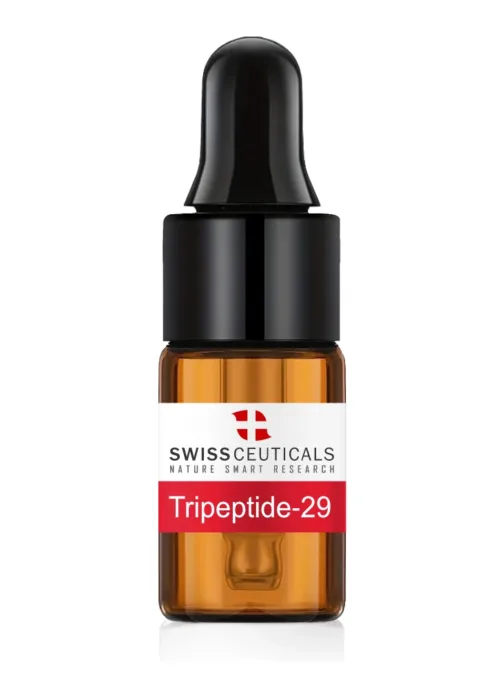-
5-amino-1MQ is a small molecule that blocks the activity of the enzyme called nicotinamide N-methyltransferase (NNMT). NNMT is a very important component in metabolism and energy and is predominantly active in fat tissue. By blocking NNMT, 5-amino-1MQ stimulates an increase in nicotinamide adenine dinucleotide (NAD+), a cofactor that is central to cellular metabolism, thereby increasing metabolic rate and activating a gene called sirtuin-1 (SIRT1). SIRT1 is also known as the "longevity gene" because of its role in reducing the risk of diabetes, obesity, metabolic syndrome, atherosclerosis and other forms of cardiovascular disease, kidney disease, liver disease, neurodegeneration, and cancer. Research in mice given 5-amino-1MQ showed a 7% reduction in body mass over 10 days without any changes in food intake, compared to controls. Research has shown that decreasing NNMT may help shrink fat cells and reduce the size of fat deposits.
-
Acetyl Hexapeptide-3 (Argireline) inhibits the release of neurotransmitters as it interferes with the formation and stabilization of the protein complex needed for docking vesicles of acetylcholine release. In an open study often female subjects, a serum containing this peptide was applied twice a day. After 1 month, the results showed a reduction in periorbital wrinkle depth of 27%.
-
BPC-157 is a penta-decapeptide composed of 15 amino acids. It is a partial sequence of the body protection compound (BPC) that was discovered in and isolated from human gastric juice. Animal studies have shown it to accelerate the healing of many different wounds, including muscle, tendon and damaged ligaments. Additionally, BPC 157 has shown to protect organs and aids in the prevention of gastric ulcers. BPC-157 acts systemically in the digestive tract to combat leaky gut, IBS, gastro-intestinal cramps, and Crohn’s disease. This peptide has been known to exhibit analgesic characteristics. Research has shown its ability to help skin burns heal at a faster rate by increasing blood flow to damaged tissues. BPC-157 significantly accelerates reticulin and collagen formation as well as angiogenesis together with stimulation of macrophages and fibroblasts infiltration representing a potential therapeutic tool in wound healing management.
-
CJC-1295 is a synthetic analogue of growth hormone releasing hormone (GHRH) that increases plasma levels of growth hormone and insulin-like growth factor 1 (IGF-1). DAC is an additive moiety that prolongs the plasma half-life of CJC-1295.
-
GDF-8 (Myostatin) Mastabol is a steroid that can be injected and has Drostanolone enanthate as it’s the vigorous element. It is used for medical as well as muscular reasons. This medication is renowned for restraining the growth of particular breast cancers. So, this drug is recommended to women with menopause greater than one year and less than five years for comfort. It also augments the androgen intensity. With the Intake of Mastabol sportspersons are able to develop their muscles faster if they have low fat in their body, not only this but it also helps in improving the quality of muscles. This drug is extremely cherished by those athletes or bodybuilders who wish to build jagged and tough muscles with no water custody moreover no extra estrogenic unnecessary reactions. In the case of intake of this drug, its detection in the urine is not feasible.
-
GHK is a tripeptide with the amino acid sequence glycyl-histidyl-lysine. It naturally occurs in human plasma, saliva, and urine. In plasma, the level of GHK is about 200 ng/mL at age 20, but declines to 80 ng/mL by age 60. This decline in the GHK-level coincides with the noticeable decrease in regenerative capacity of an organism. Scientific research has revealed that GHK can assist in wound healing, infection control, hair growth, cancer, cognitive health, and facial cosmetic use.
-
GHK-Cu (copper tripeptide) (Topical), is one of the most well-examined peptides and is a naturally occurring plasma peptide that significantly declines during human aging and. In cosmetic applications, GHK-Cu is used in anti-aging, anti-wrinkle, after-sun, skin renewal, skin moisturizer, and hair growth stimulating products. The in vitro research effects of this carrier peptides is to deliver copper to the skin to activate enzymatic wound-healing pathways, while the desired, in vivo, effect is to make the skin more smooth, thick, and firm due to increased collagen production. GHK-Cu has been proven to stimulate collagen and decorin production and improving wound healing and tissue generation. It has also been established that GHK-Cu improves the condition of aging skin and hair, and possesses antioxidant and anti-inflammatory effects.
-
GHK-Cu (copper tripeptide) (Topical), is one of the most well-examined peptides and is a naturally occurring plasma peptide that significantly declines during human aging and. In cosmetic applications, GHK-Cu is used in anti-aging, anti-wrinkle, after-sun, skin renewal, skin moisturizer, and hair growth stimulating products. The in vitro research effects of this carrier peptides is to deliver copper to the skin to activate enzymatic wound-healing pathways, while the desired, in vivo, effect is to make the skin more smooth, thick, and firm due to increased collagen production. GHK-Cu has been proven to stimulate collagen and decorin production and improving wound healing and tissue generation. It has also been established that GHK-Cu improves the condition of aging skin and hair, and possesses antioxidant and anti-inflammatory effects.
-
GHRP-2 is a synthetic growth hormone secretagogue that binds to the ghrelin/growth hormone secretagogue receptor. It has been shown in research trials to improve muscle growth, regulate the immune system, and improve sleep cycles. GHRP-2 research has shown that it has oral bio-activity.
-
GHRP-6 serves as a potent stimulator for the natural release of Growth Hormone from the anterior pituitary. Additionally, it acts as an agonist for ghrelin/growth hormone receptors, belonging to a select group of ghrelin analogues developed in recent decades. Research indicates that GHRP-6 positively influences heart muscle cells, memory formation, scar formation, sex motivation, and neurons associated with Parkinson’s disease. Notably, GHRP-6 demonstrates oral and sublingual activity, showcasing moderate to high selectivity.
-
IGF-1 LR3 (insulin-like growth factor-1 long arginine 3) is a synthetic, modified construct of insulin-like growth factor-1. Because IGF-1 LR3 does not bind to IGF-1 binding proteins very well, it remains active up to 120 times longer than standard IGF-1. This results in improved half-life for the peptide and thus increased activity. IGF-1 LR3 enhances cell division and growth, boosts fat metabolism, and increases muscle repair and hypertrophy by inhibiting myostatin. Recent research suggests that IGF-1 LR3 may also be useful in improving lactation among mothers with young offspring.
-
Ipamorelin is a pentapeptide, meaning that its structure is comprised of five amino acids. It is a GH secretagogue, and is considered to be an agonist, meaning that it possesses the ability to bind certain receptors of a cell and provokes a cellular response. Ipamorelin’s operational mechanics enables the peptide to stimulate the production of pituitary gland-based expression of secretions related to growth amongst animal test subjects. At the same time, the presence of the peptide has been shown to inhibit the production of a secretion known as somatostatin. Additionally, it has been determined that Ipamorelin has the ability to boost the production of IGF-1, or Insulin-like Growth Factor 1. Its presence plays a key role in the overall growth and repair of muscular and skeletal tissue.
-
Matrixyl is a lipopeptide, a fatty acid mixed with amino acids. It is also considered to be a synthetic isomer (an isomer is a molecule that has an identical structure to another molecule but different atomic components). The active element in Matrixyl is called Micro-collagen - another peptide.
-
Melanotan 2 (MT-2) is a synthetic analogue of alpha-melanocyte-stimulating hormone. Developed in the 1980s, Melanotan-2 has been shown to increase sexual arousal, reduce compulsive/addictive behavior, curb hunger and increase melanin production. Research has shown the peptide to stimulate melanocytes therefore producing increased skin pigmentation and may help to combat autism when used during early childhood development.
-
PT-141, also called Bremelanotide (generic clinical name), is a heavily modified synthetic derivative of alpha-melanocyte-stimulating hormone. It has been tested in clinical trials as a treatment for both male/female hypoactive sexual desire disorder and acute hemorrhage. PT-141 is an agonist for the melanocortin-4 and melanocortin-1 receptors. Research shows that it promotes sexual arousal and stimulates the immune system.
-
Semaglutide is a derivative of the naturally occurring GLP-1, a peptide known to lower blood sugar levels and enhance insulin secretion. Research shows that Semaglutide may also improve heart, liver, and lung function while helping to slow or prevent the effects of Alzheimer’s disease. Semaglutide has been shown to significantly decrease appetite by delaying gastric emptying and reducing intestinal motility. Glucagon-Like Peptide-1 (GLP-1) Analog Shown to Stimulate Insulin and Suppress Glucagon Secretion in a Glucose-Dependent Manner.
-
Sermorelin is a growth-hormone-releasing hormone (GHRH) analogue used clinically to assess growth hormone secretion. It is of interest to researchers for its ability to improve bone density, reduce scaring, fight the effects of dementia, and reduce seizure activity.
-
TB-500 (Thymosin Beta-4) is a 43 amino acid peptide sequence. In animal models, Thymosin Beta-4 has been shown to improve blood vessel growth, regulate wound healing, decrease inflammation, and reduce oxidative damage in the heart and central nervous system. Thymosin-beta-4 has a role in protection, tissue repair, regeneration and remodeling of injured or damaged tissues. It is also of active interest in anti-aging research.
-
Tripeptide-29 is a synthetic collagen-like tripeptide composed of Hydroxyproline, Proline, Glycine. CAS No. 2239-67-0 Water Content: <5% Sequence: Gly-Pro-Hyp Molecular Formula: C12H19N3O5 Molecular Weight: 285.3

